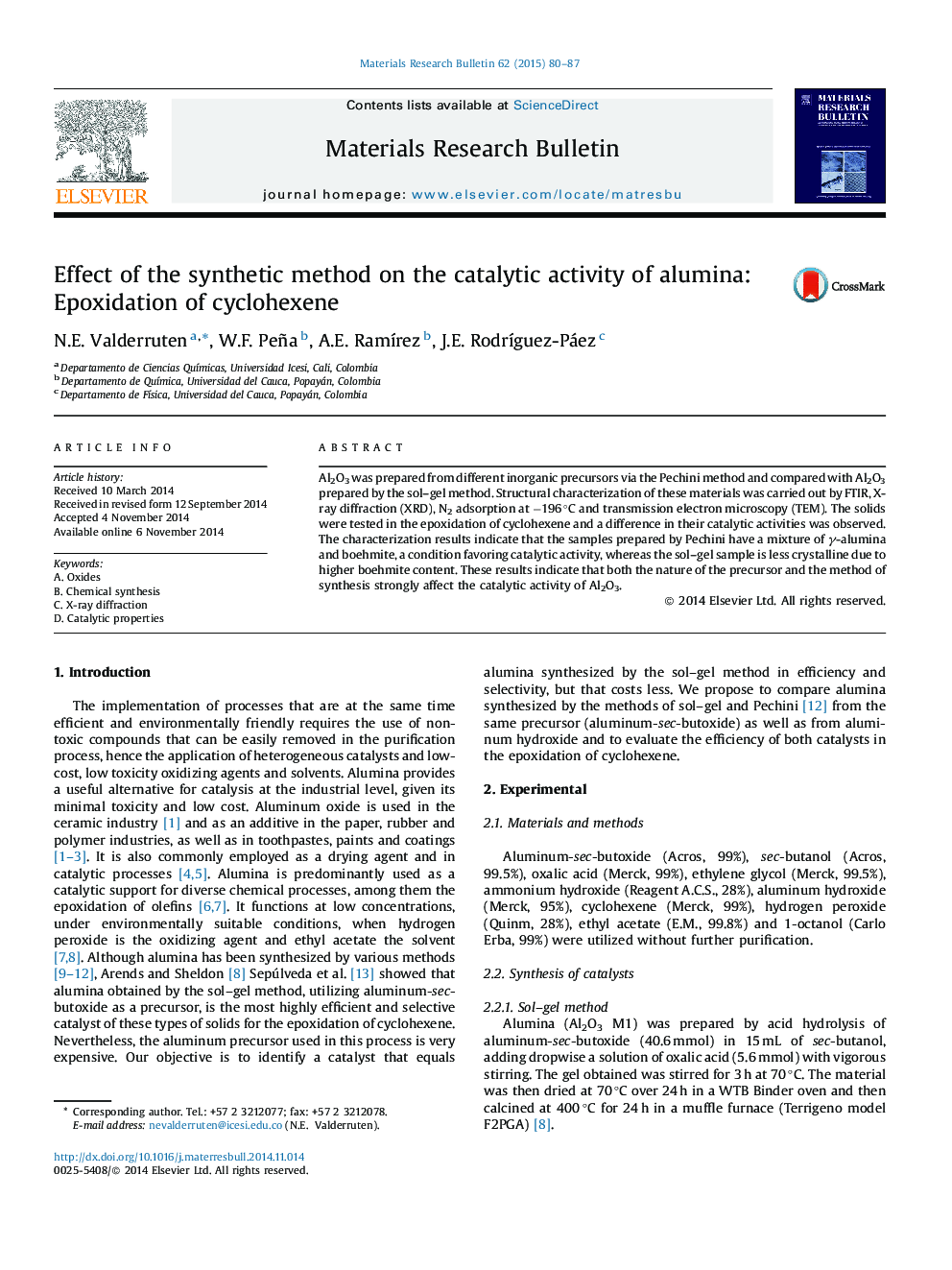| Article ID | Journal | Published Year | Pages | File Type |
|---|---|---|---|---|
| 1487639 | Materials Research Bulletin | 2015 | 8 Pages |
•Aluminum oxide was synthesized using Pechini method.•The alumina obtained showed a mix of boehmite and γ-alumina phases.•We research an economically feasible method to obtain alumina for use as a catalyst.•Alumina obtained by Pechini showed high percent conversion and/or selectivity.•The best results were 78% conversion and 78% selectivity to epoxidation reactions.
Al2O3 was prepared from different inorganic precursors via the Pechini method and compared with Al2O3 prepared by the sol–gel method. Structural characterization of these materials was carried out by FTIR, X-ray diffraction (XRD), N2 adsorption at −196 °C and transmission electron microscopy (TEM). The solids were tested in the epoxidation of cyclohexene and a difference in their catalytic activities was observed. The characterization results indicate that the samples prepared by Pechini have a mixture of γ-alumina and boehmite, a condition favoring catalytic activity, whereas the sol–gel sample is less crystalline due to higher boehmite content. These results indicate that both the nature of the precursor and the method of synthesis strongly affect the catalytic activity of Al2O3.
Graphical abstractTemperature influence on percent conversion and selectivity in the epoxidation of cyclohexene using commercial alumina as a catalyst.Figure optionsDownload full-size imageDownload as PowerPoint slide
